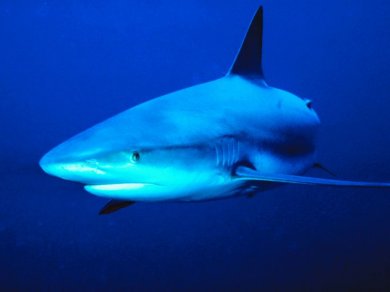Marine microorganisms convert inorganic mercury into methylmercury which is a 1000 times more toxic. The higher up in the food chain, the greater the enrichment and the higher the toxicity to the ingesting fish. Simple, fast and especially low-cost measuring procedures are in great demand.
Mercury in Fish
A single 300 g shark steak contains twice the acceptable weekly (!) intake of methylmercury as determined by toxicologists [1, 2]. Methylmercury is completely taken up by the human body, damages the central nervous system and organs, and affects foetal development. Since 2008 the European Commission has allowed an overall mercury content in edible fish of up to 1 mg/kg – but no distinction is made between the inorganic mercury, Hg2+, and the much more hazardous methylmercury, CH3Hg+.
As the accumulation in individual fish species can vary a lot, methods are needed that differentiate between mercury forms and measure quickly and reliably. Currently used standard procedures are mostly quite elaborate [1, 4]. The groups of Ramón Martínez-Máñez (University of Valencia, Spain) and Knut Rurak (Federal Institute for Materials Research and Testing, Berlin) have now developed a biomimetic concept [4], which takes its cue from the signal amplification in biomembranes: A molecular stimulus binds to a receptor, the resulting change in the receptor’s configuration opens a pore and the way is cleared for many times the amount of signalling molecules.
Pore Material
For their new system the researchers used nanoparticles of partially-organized silicates as the pore material. These silicates have pores of defined size and their surfaces can be functionalised easily. For the sensor set-up, the pores were first filled with a dye. Then the surface was coated with a molecule that binds methylmercury quantitatively and the pores closed by “capping” them with a further colorant molecule. This “lid” comes off again when the functionalised particle is exposed to a mercury-containing solution. The more methylmercury is present, the more pores open up and the more dye is released, that can then be quantitatively measured.
So far the sensitivity of this novel system is inferior to that of established methods, but its great advantage is the considerably reduced amount of laboratory work involved. An advancement of the method may eventually allow measurements at the scene of the fish haul, revealing hazardous mercury contaminations of the potential meal on site.
Based on an article by Roswitha Harrar in Chemie in unserer Zeit; translated by Ines Chyla.
References:
[1] R. Kruse, E. Barthelt, “Exposition mit Methylquecksilber durch Fischverzehr und Etablierung analytischer Methoden zur Bestimmung von Methylquecksilber in Fischereierzeugnissen” (Gemeinsamer Endbericht), Umweltforschungsplan des Bundesministeriums für Umwelt, Naturschutz und Reaktorsicherheit 2008. www.bfr.bund.de/cm/220/exposition_mit_methylquecksilber_durch_fischverzehr.pdf (in German)
[2] According to the 2003 assessment of the Joint FAO/WHO expert committee on Food (JECFA) 1.6 µg of methylmercury per kg body weight can be considered as “provisional tolerable weekly intake”. This estimation was also adopted by the European Commission. The National Research Council (NRC) of the USA set a value of 0.7 µg/kg body weight per week.
[3] Commission regulation (EC) No. 629/2008 of 2 July 2008 setting maximum levels for certain contaminants in foodstuffs.
[4] E. Climent et al., “The Determination of Methylmercury in Real Samples Using Organically Capped Mesoporous Inorganic Materials Capable of Signal Amplification”, Angew. Chem. Int. Ed. 2009, 48(45), 8519–8522. DOI: 10.1002/anie.200904243



